8/6/2010
Pavel Mára
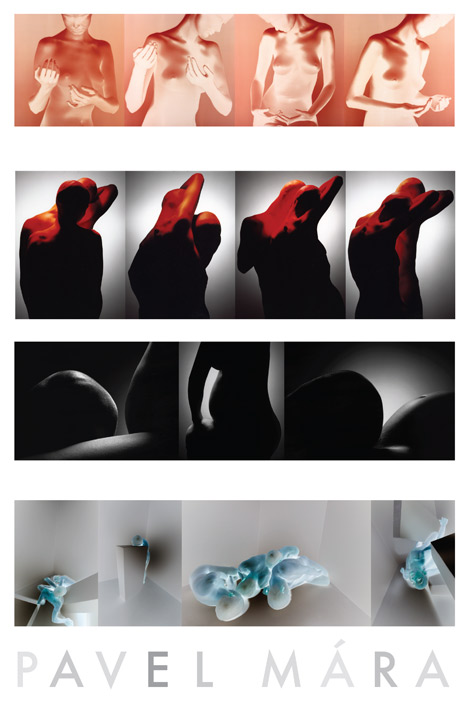 |
Madony / Madonnas / 1999
Mechanické corpusy / Mechanical Corpuses / 1997
Černé corpusy / Black Corpuses / 2001
Memory / 2009
Katalog vydaly pro 10. ročník česko-slovenského semináře Kognice a umělý život X
(31. 5. –4. 6. 2010, hotel Sepetná, Ostravice)
Ústav informatiky a Institut tvůrčí fotografie Filozoficko-přírodovědecké
fakult y Slezské univerzity v Opavě, Bezručovo nám. 13, 746 01 Opava
This catalog was published on the occasion of the 10th Czecho-Slovak Workshop
on Cognition and Artif icial Life X (May 31 – June 4, 2010, Sepetná hotel, Ostravice)
by the Institute of Computer Science and Institute of Creative Photography,
Facult y of Philosophy and Science, Silesian University in Opava,
Bezručovo nám. 13, 746 01 Opava
P A V E L M Á R A
narozen 20. října 1951 v Praze / born October 20, 1951 in Prague
studia
1967–1971 Střední průmyslová škola grafická v Praze, obor užitá fotografie
1971–1975 FAMU Praha, obor kamera
1976–1981 FAMU Praha, obor fotografie
pedagogická činnost
1995–1996 FAMU Praha, katedra fotografie
V současnosti je docentem na Institutu tvůrčí fotografie Filozoficko-přírodovědecké
fakulty Slezské univerzity v Opavě, kde učí od roku 1996
1967–1971 Secondary Graphic School Prague, specialization Applied Photography
1971–1975 Film and TV School of Academy of Performing Arts in Prague, Department of Cinematography
1976–1981 Film and TV School of Academy of Performing Arts in Prague, Department of Photography
teaching activities
1995–1996 Film and TV School of Academy of Performing Arts in Prague, Department of Photography
Presently works as Associate Professor at the Institute of Creative Photography, Faculty of Philosophy
and Science, Silesian University in Opava, where he‘s been teaching since 1996
www.pavelmara.cz
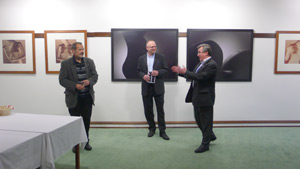 |
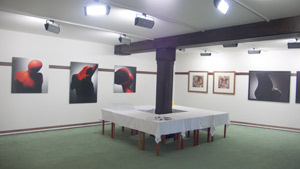 |
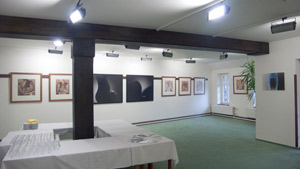 |
 |
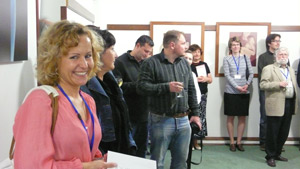 |
| Fotografie z vernisáže - Sepetná 2010 |
Pavel Mára nepochybně patří k nejvýraznějším osobnostem současné české fotografie nejenom jako autor rozsáhlého díla, ale i jako dlouholetý vysokoškolský pedagog a kurátor fotografických výstav. Vedle volných a užitých fotografií vytváří také audiovizuální programy a videa, k čemuž mu pomáhá, že vystudoval na pražské FAMU jak obor fotografie, tak obor kamera. Vždy mu ovšem jde o výtvarnou stylizaci, o redukci výchozí skutečnosti, o promyšlené využití barev. Pavel Mára tvoří výtvarně vytříbená a myšlenkově bohatá díla, která se nesnaží nutně být v ohnisku nejmódnějších trendů, ale plynule pokračují v jeho tvůrčí cestě.
Výrazná stylizace se objevuje v jeho známém, mnohokrát publikovaném a vystavovaném cyklu Mechanické corpusy (1997),
které znamenají určitý spirálovitý návrat k Mechanickým zátiším a minimalistickým Modrým aktům z první poloviny 80. let a k cyklu Corpusy z let 1988–1989. Expresivní monochromatické detaily červených těl akcentují androgynost holohlavých modelů v prázdných prostorech a vytvářejí symboly lidských osudů, vztahů a vášní, široce otevřené individuální interpretaci. Samotná těla připomínají sochy, ale jejich zobrazení – především se to týká dvojic těl – sugeruje pohyb, tanec, vášnivá objetí, sex.
Jestliže v těchto fotografiích dominovala vypjatá tělesnost, následující Madony 99 (1999) představují návrat k duchovním a sakrálním motivům souborů Roušky a Madony 90. Mára v nich prostřednictvím jemných negativních zvětšenin v pastelových tónech vytvořil soubor nahých Madon se skloněnými tvářemi, které svými gesty naznačují, že v náručí drží dítě, ale ve skutečnosti jsou jejich náruče prázdné. Autor tak klade otázky, zda jde o obraz nenaplněného mateřství nebo naopak o metaforu mateřské lásky, něhy a touhy, odpovědi však nechává na divácích. Podobným tématem se zabývá i ve svém souboru z roku 2001 (Černé corpusy – Rodina), ve kterém se vrací k černobílé fotografii.
Zatím poslední výraznou zatáčku na Márově tvůrčí cestě představuje cyklus expresivních barevných zvětšenin s nahými mužskými postavami v abstraktních prostorách s názvem Memory (2009), poprvé představený na loňské autorově velké výstavě v Galerii umění v Karlových Varech. I on svědčí o myšlenkové náročnosti, výtvarné působivosti a technickém perfekcionismu jeho tvorby.
Vladimír Birgus
Pavel Mára undoubtedly belongs to the most pronounced personalities of the current Czech photography, not only as an author of extensive collections, but also as a long term university teacher and a curator of photography exhibitions. He graduated from the Film and TV School of Academy of Performing Arts in Prague, specializing in photography as well as camera, and apart from his art and applied photography he also creates audiovisual programs and videos. Pavel Mára always aims at artistic formula, reduction of underlying reality and elaborate use of colors. He creates artistically refined and profound works that are not necessarily trying to satisfy the latest trends but smoothly continue along his creative path.
Distinctive stylistic patterns appear in his well-known, much published and often exhibited series Mechanical Corpuses (1997), which marks a certain spiral return to Mechanical Still-Lifes and minimalistic Blue Nudes from the first half of the 1980s and to the Corpuses cycle from 1988–1989. Expressive monochromatic details of the red bodies accentuate androgynousness of hairless figures in empty spaces and create symbols of human destiny, relationships and passions, widely open to individual interpretations. The bodies themselves look like statues but their portrayal – and this applies especially to the pairs of bodies – brings to mind movement, dance, passionate embraces and sex.
While in these photographs sensuality is dominant, the following Madonnas 99 (1999) represent a come-back to spiritual and religious motifs of the series Veils and Madonnas 90. Using delicate negative enlargements in pastel shades, Mára has created a collection of nude Madonnas with bowed heads who, having their arms empty, suggest they are holding a child. This way the artist poses questions whether they represent a picture of unfulfilled maternal instincts or on the contrary the metaphor of maternal love, tenderness and passion, leaving it up to the viewer to answer. Similar subjects appear also in his series from 2001 (Black Corpuses – Family), in which he returns to black and white photography.
The last distinctive turn on Mára‘s creative path is so far marked by the series of expressive color enlargements of naked male bodies in abstract spaces called Memory (2009), for the first time presented last year at the artist‘s large exhibition in the Art Gallery Karlovy Vary. It shows richness of thoughts, artistic appeal and technical perfectionism of the artist‘s works.
Vladimír Birgus

